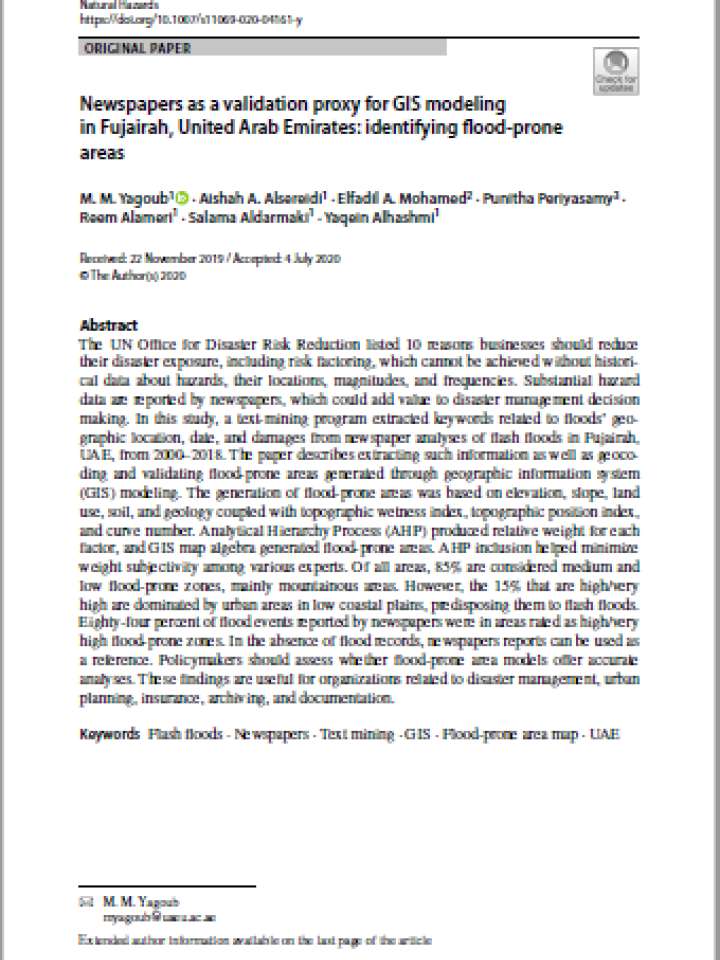Newspapers as a validation proxy for GIS modeling in Fujairah, United Arab Emirates: Identifying flood-prone areas
The UN Office for Disaster Risk Reduction listed 10 reasons businesses should reduce
their disaster exposure, including risk factoring, which cannot be achieved without historical
data about hazards, their locations, magnitudes, and frequencies. Substantial hazard
data are reported by newspapers, which could add value to disaster management decision
making. In this study, a text-mining program extracted keywords related to floods’ geographic
location, date, and damages from newspaper analyses of flash floods in Fujairah,
UAE, from 2000–2018. The paper describes extracting such information as well as geocoding
and validating flood-prone areas generated through geographic information system
(GIS) modeling. The generation of flood-prone areas was based on elevation, slope, land
use, soil, and geology coupled with topographic wetness index, topographic position index,
and curve number. Analytical Hierarchy Process (AHP) produced relative weight for each
factor, and GIS map algebra generated flood-prone areas. AHP inclusion helped minimize
weight subjectivity among various experts. Of all areas, 85% are considered medium and
low flood-prone zones, mainly mountainous areas. However, the 15% that are high/very
high are dominated by urban areas in low coastal plains, predisposing them to flash floods.
Eighty-four percent of flood events reported by newspapers were in areas rated as high/very
high flood-prone zones. In the absence of flood records, newspapers reports can be used as
a reference. Policymakers should assess whether flood-prone area models offer accurate
analyses. These findings are useful for organizations related to disaster management, urban
planning, insurance, archiving, and documentation.
Explore further
